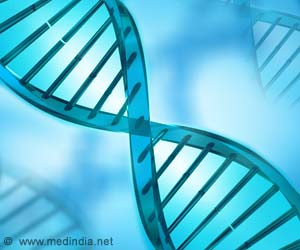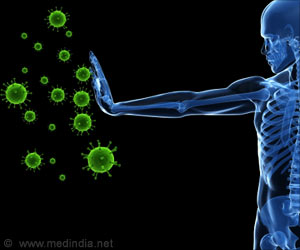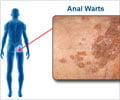
‘The gene RASGRP1 plays a role in dynein functions in Natural Killer cells. An error in RASGRP1 renders the gene inactive and has been linked to a new human immunodeficiency.’
Tweet it Now
First author Dr. Elisabeth Salzer, postdoctoral fellow in the
Boztug lab, identified a 12-year-old patient who suffered repeated
life-threatening infections since his birth. Three of the patient's six
siblings had died within their first two years seemingly of a similar
disorder. The researchers suspected that a genetic condition might be
linked to the patient's inability to fight infection.
"Our analyses of the patient's and his parents' genomes indeed confirmed that the boy's disorder had a genetic cause," said Salzer.
The genetic cause is an error in the gene RASGRP1 that renders the gene inactive. This type of mutation had never been reported before. The healthy parents and the healthy siblings carry one mutated copy of the gene and one normal copy that compensates for the faulty gene. The patient, on the other hand, inherited one mutated copy from each parent.
The patient presented with a primary immunodeficiency that involves a new combination of immune defects in essential members of the immune system, T cells, B cells and Natural Killer cells. Until now, the role RASGRP1 plays in the immune system had not been studied in humans.
To determine the mechanisms that might lead to the patient's inability to fight infections, the Vienna group collaborated with the lab of Dr. Jordan Orange at Baylor. Orange is professor and section head for immunology, allergy and rheumatology in pediatrics at Baylor and the director of the Center for Human Immunobiology at Texas Children's Hospital.
Advertisement
The Baylor group found that the gene RASGRP1 plays a role in dynein functions in Natural Killer cells. Dynein is a motor protein; it moves things around inside cells.
Advertisement
The studies from the Orange lab provided a functional link between the defects in Natural Killer cells and dynein, which in combination with other observations led the Austrian team to try the drug lenalidomide to treat the patient. The drug showed potential to reverse some of the effects of RASGRP1's mutation.
"The whole process from the discovery of a gene defect as the cause of a rare disease to the exploration of the disease-causing mechanism to the development of a personalized therapy does much more than helping the affected patients," said Boztug. "Virtually every case - such as the immunodeficiency of this young patient - provides profound new insights into the human organism and paves the way toward a future precision medicine."
"This work was the result of a tremendous collaboration among international groups of researchers and with the family of the patient," said Orange. "Our work at Baylor and Texas Children's Hospital continues to include us among the world leaders in the study of primary immnodeficiencies and their biological underpinnings."
Source-Eurekalert












